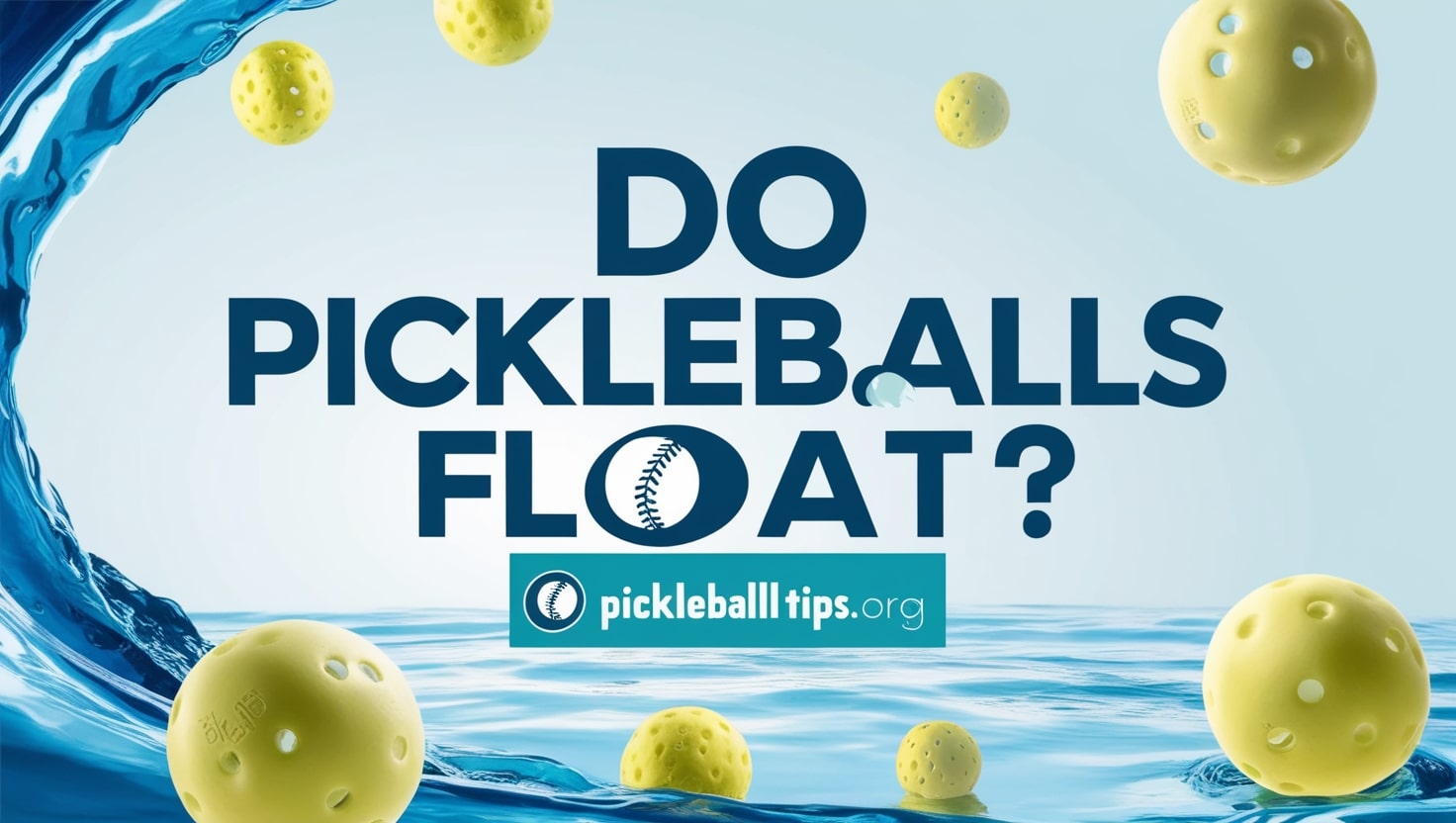Pickleball is one of the fastest-growing sports worldwide, captivating players with its unique blend of tennis, badminton, and table tennis elements. As the sport continues to gain traction, players are increasingly curious about the specifics of the equipment used. One popular question is: Do pickleballs float? Understanding this can help players better care for their pickleball equipment, particularly when playing near water. In this article, we’ll dive deep into this question and explore the fascinating science behind pickleballs, their material composition, and how they interact with water.
Understanding Pickleball Construction

To answer whether pickleballs float, it’s crucial to first understand their construction. Pickleballs are made of lightweight, durable plastic. They are perforated with numerous small holes to ensure optimal aerodynamics during play.
Material Composition
Pickleballs are typically crafted from high-density polyethylene (HDPE) or polypropylene. These materials are chosen for their durability and ability to withstand the rigors of pickleball play. While these plastics are strong, they are also relatively lightweight, a key factor in whether an object will float or sink in water.
Weight and Size
The standard weight of a pickleball ranges from 0.8 to 1.02 ounces (22-29 grams), and the diameter is approximately 2.87 to 2.97 inches. The light weight of the ball, combined with its hollow design, is essential in determining whether it will float.
The Science of Floating: Why Some Objects Float
To determine whether pickleballs float, let’s first revisit the science of buoyancy. According to Archimedes’ principle, an object will float if the upward buoyant force exerted by the fluid is equal to or greater than the object’s weight. The buoyant force depends on the density of the object relative to the fluid.
- Density: Objects less dense than water (1 g/cm³) will float, while denser objects sink.
- Shape and Volume: Hollow or perforated objects displace more water relative to their weight, increasing buoyancy.
With these principles in mind, the question arises: Are pickleballs designed to be buoyant?
Do Pickleballs Float in Water?
Yes, pickleballs do float. Their lightweight plastic composition and hollow structure make them less dense than water, allowing them to float when submerged. However, the degree of flotation can vary depending on the type of pickleball.
Outdoor vs. Indoor Pickleballs
Pickleballs come in two main categories: indoor and outdoor.
- Outdoor Pickleballs: Made for rugged surfaces and outdoor conditions, these balls are slightly heavier and have smaller holes to reduce wind interference. Despite their higher density, outdoor pickleballs still float due to their hollow interior.
- Indoor Pickleballs: Lighter and featuring larger holes, indoor pickleballs float even more readily than their outdoor counterparts.
How Long Do Pickleballs Stay Afloat?
While pickleballs float initially, prolonged exposure to water can affect their buoyancy. Over time, water may seep into the perforations, especially if the ball is damaged or cracked, causing it to sink gradually. Proper care is essential to maintain their performance and buoyancy.
Real-World Scenarios: When Does Floating Matter?
Understanding whether pickleballs float can be particularly useful in certain situations:
- Playing Near Water
Many pickleball courts are located near water bodies, such as lakes or pools. If a ball accidentally lands in the water, its ability to float makes retrieval easier. - Cleaning Pickleballs
Cleaning pickleballs involves soaking them in water to remove dirt or debris. Their floating ability ensures they won’t get lost in the cleaning process. - Storage Considerations
If pickleballs are stored in damp or wet environments, knowing their floating characteristics can help in selecting the right storage containers to prevent prolonged exposure to water.
Can Water Damage Pickleballs?
While pickleballs can float, prolonged exposure to water can compromise their integrity. Here’s what you need to know about water damage:
- Material Degradation: Repeated exposure to water may weaken the plastic, reducing durability.
- Water Retention: Cracked or heavily used pickleballs may retain water inside, affecting their performance.
- Avoiding Damage: To prevent water damage, always dry pickleballs thoroughly after cleaning or retrieving them from water.
Tips for Maintaining Pickleball Performance
To extend the lifespan and performance of your pickleballs, follow these maintenance tips:
- Clean Regularly: Use a mild soap solution to clean pickleballs, and avoid harsh chemicals that may degrade the plastic.
- Dry Thoroughly: After exposure to water, dry pickleballs with a soft towel and store them in a dry, cool place.
- Inspect for Damage: Regularly check for cracks or warping, as these can affect buoyancy and performance.
Frequently Asked Questions
1. Do pickleballs sink over time in water?
Pickleballs may sink if left in water for an extended period, especially if they have cracks or damage that allows water to enter.
2. Can I play pickleball in the rain?
Playing in the rain is possible but not ideal. Wet conditions can affect ball performance and increase the likelihood of water damage.
3. Are there waterproof pickleballs?
While all pickleballs are water-resistant, no pickleball is completely waterproof. Proper care and quick drying after water exposure are crucial.
Conclusion
So, do pickleballs float? The answer is a resounding yes. Their lightweight plastic construction and hollow design ensure buoyancy, making them practical for play and easy to retrieve from water. Whether you’re a casual player or a pickleball enthusiast, understanding this feature can enhance your playing experience and help you maintain your equipment.
Thank you for taking the time to read this detailed guide on pickleball buoyancy here at pickleballtips.org. Your support fuels our commitment to providing the best tips and insights for pickleball enthusiasts worldwide. Happy playing!
